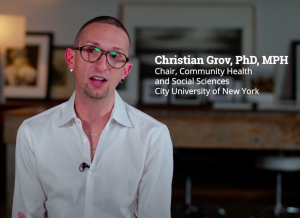A team co-led by CUNY SPH Distinguished Professor Christian Grov was awarded a two-year $420,000 grant from the National Institute on Drug Abuse (NIDA) to identify preferences for the delivery of long-acting injectable (LAI) PrEP to sexual minority men who use methamphetamine.
Sexual minority men in the U.S. are at particular risk of contracting HIV, and a resurgence of methamphetamine use among this population has only exacerbated this. Grov and team say that sexual minority men who use meth have a quadrupled risk of HIV seroconversion.
“PrEP has been approved in an oral formulation of a once-daily pill for over a decade now and need continues to outpace uptake,” says Grov. “Long-acting injectable PrEP (where someone gets a single shot every two months) has come to market relatively recently and could be a game-changer for those whom a daily pill is not feasible. Given the risk that methamphetamine poses to elevate HIV risk, anything that can be done to improve PrEP adoption, including the use of LAI PrEP, could have a durable effect on reducing HIV disparities.”
The research team includes co-principal investigator Viraj V. Patel of the Albert Einstein College of Medicine, and co-investigators Yan Guo, former research scientist at the CUNY Institute for Implementation Science in Population Health (ISPH) and Adam Carrico of Florida International University. The team will leverage the participant pool from the American Transformative HIV Study (AMETHST), their ongoing U.S. national cohort of men who use methamphetamine.
In this new study, they will conduct qualitative interviews to deepen understanding of the barriers to and facilitators of LAI PrEP uptake and maintenance, followed by a Discrete Choice Experiment (DCE) to quantitatively assess preferences for different LAI PrEP delivery choices. Their combined skills in deep understanding of this population uniquely positions them to ensure the success of the exploratory study.




